For different type of electrical motors and there are different type of motor starting technologies available. Adding more to that depending on the application, power availability and feature you require you may need more than combination of one technology.
What is a Motor Starter?
A starter (also known as a starter motor, cranking motor, or self-starter) is an electrical device that allows an engine to initiate an operation on its own by sending an electrical push of current to the motor. The motor starter safely starts, stops, and protects electric motors. It regulates the initial inrush current, reducing stress on the motor and connected circuits. Motor starters often include overload protection, contactors, and relays to ensure efficient operation and safety, making them essential components in industrial and commercial motor control systems.

How Motor Starters Work
A motor starter is an essential device used to control the flow of electrical current to a motor. It effectively manages the safe start, stop and protect functions. Motor starters work by controlling the flow of electrical current to a motor. They use contactors to close the circuit and start the motor, while overload relays monitor current levels to prevent damage from overheating. It regulates the initial rush current, reducing stress on the motor and connected circuits. Motor starters also provide crucial overload protection, ensuring the motor doesn’t draw excessive current during startup. This safeguards the motor and any connected equipment from potential damage and prolongs system life.
Key Components of a Motor Starter
- Contactor – Controls the flow of electrical current to the motor by opening and closing the circuit.
- Overload Relay – Protects the motor from overheating or overcurrent by interrupting the circuit if necessary.
- Control circuit – Includes push buttons or switches for starting or stopping the motor.
- Thermal or Magnetic Protection – Prevents damage caused by excess current or temperature.
- Enclosure – Provides housing for the components, ensuring durability and safety.
Applications of Motor Starters in Industry
- Manufacturing – Control machinery like conveyors, pumps, compressors and mixers.
- Oil and Gas – Manage critical equipment such as drilling motors and pipeline pumps.
- HVAC Systems – Regulate fans and compressors for heating, ventilation and air conditioning.
- Water Treatment – Operate pumps and agitators in treatment processes.
- Mining – Drive crushers, hoists and other heavy equipment.
- Agriculture – Power irrigation systems and grain elevators.
- Renewable Energy – Control motors in wind and solar energy systems.
- Construction – Operate concrete mixers and other motorized tools.
Cost and Maintenance of Motor Starters
- Cost Variability – Prices range from affordable manual starters to advanced, automated models, depending on size and features.
- Regular Inspection – Periodic checks of contacts, relays and wiring ensure reliability and prevent failures.
- Part Replacement – Components like contactors may need replacement due to wear over time.
- Cleaning and Lubrication – Routine cleaning and proper lubrication enhance performance and longevity.
- Troubleshooting – Addressing issues promptly minimizes downtime and maintenance costs.
- Quality Investment – High quality components reduce maintenance demands and improve overall system efficiency.
Types of Motor Stater
There are three main type of motor starters.
- Manual Motor starter
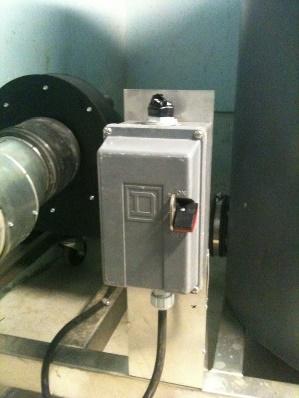
Manual motor starter is combination of a heavy-duty motor rated switch with a set of bimetallic thermal overload, this motor starter can be only turned on or off manually being in front of the starter but this will automatically trip in case of overload situation and you have to manually reset it.
- Magnetic motor starter
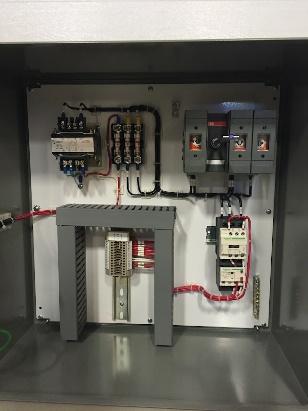
Magnetic motor starter is combination of a magnetic contactor and set of bimetallic or electronic overload device, this motor starter can be turned on or off manually being in front of the starter or remotely. This technology can also be integrated with other devices like sensors, float switches or PLCs to start or stop automatically
- Solid State Motor Starter
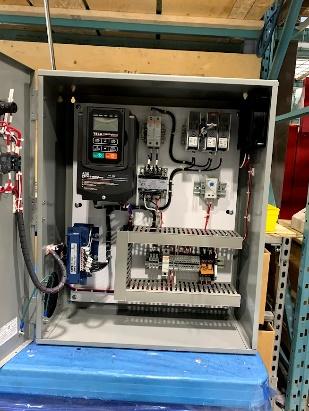
Solid state motor starter has all the feature of magnetic motor starter and additionally this can limit the inrush current of the motor, speed control of the motor and provide you monitoring data like current, voltage and torque.
Also Read : Tips to Update your Motor Starter
Factors to Consider for Selecting Motor Starter
1. Contactor Size & Line Power
The size of a contactor and the line power are related because the contactor must be sized appropriately to handle the line power of the motor it is controlling.
Line power refers to the electrical power that is supplied to the motor, typically in terms of voltage and current. The size of the contactor must be capable of handling the line power of the motor, meaning that it must be able to carry the current required by the motor without overheating or otherwise being damaged.
There are several factors that influence the size of the contactor, including the type of motor, application of motor, the voltage and current requirements, the duty cycle of the motor, Contactor are marked with voltage and motor horsepower they can run. In general, larger motors will require larger contactors, while smaller motors can be controlled by smaller contactors.
2. Overload Relay Range
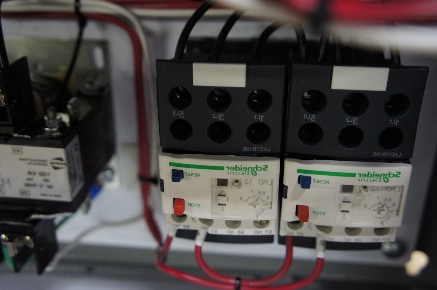
An overload relay is a protection device used in motor power circuit to prevent motors from overloading or overheating. The overload relay range refers to the range of current values within which the relay will activate to protect the motor.
The overload relay range is set to match the full load current of the motor. The full load current is the amount of current required to operate the motor at its rated output power. The overload relay range should be set such that it will activate if the current exceeds the full load current of the motor by a certain percentage, typically between 10% to 25% of the motor rated current.
Some overload has fixed range so it is important to choose the right overload relay range for a specific motor to ensure that it will be protected against overloading or overheating. Other overload relays have an adjustable range to set. It is very important to set the range by figuring out the full load current of the specific motor, it duty cycle and application.
3. AC Coil Control Power

The AC coil control power of a contactor refers to the power required to energize the coil of the contactor to close the power and auxiliary contacts and energize the motor. The AC coil control power can be supplied by the same AC source as the motor, or it can be supplied by a separate lower AC or DC power source. 120VAC or 230V and 24VDC are most common coil control voltages in the industry.
Always make sure coil control power must be sufficient to energize the coil and close the contacts properly. Coil power consumptions is always listed on the contactor name plate.
4. Enclosure Cover Buttons
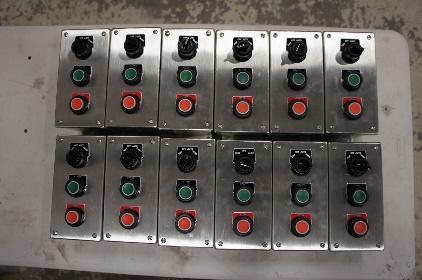
This is referring to switches or pilot lights installed on the door of the control panel enclosure.
There are few things to keep in mind when designing or installing these items on the enclosure door. Enclosures have an environmental rating which tell thee are indoor, outdoors or dust proof. The operators must have the same rating of the enclosure or above.
Some enclosures could be really tall, consider installing all the operable switches within human reach, A safe distance will be 6 feet when measuring of the working platform where a work will stand and operate these.
5. Full Torque at Zero Speed
“Full torque at zero speed” refers to the capability of an electric motor to produce its maximum torque output when it is not rotating or at a standstill. This is an important characteristic for applications where quick and powerful starting is required, such as in electric vehicles, drill presses, conveyors or some other industrial machinery. Motors with this capability are commonly known as “torque motors” or “zero speed torque motors”.
Variable Frequency Drives can be used to achieve full torque at zero speeds by adjusting the voltage to provide the correct level of power to the motor.
The frequency setting should be set to match the optimal operating frequency of the motor. High frequency will increase the torque, but also the heat generated by the motor.
Also Read: Useful Tips for Extending the Lifespan of Starter Motor
6. Cost, Size, and Thermal Considerations
The cost, size, and thermal considerations of a Variable Frequency Drive are important factors to consider when selecting a VFD for a specific application.
Cost: Mostly the cost of the VFD depends on the input voltage, size, features and brand. Typically larger and more advanced VFDs will be more expensive, while smaller and basic models will be less expensive. It’s important to balance the cost with the specific requirements and features needed for the application.
Size: The size of the VFD will depend on the motor power and the specific features required. Larger VFDs will be able to handle run larger motors and provide more advanced features, while smaller VFDs will be more compact and suitable for smaller motors.
Thermal considerations: The thermal performance of the VFD is a critical factor to consider. The VFD must be able to dissipate heat generated by the motor and the VFD itself, to avoid overheating and potential damage. The thermal performance will depend on the design and cooling system of the VFD, ambient temperature and the specific requirements of the application.
